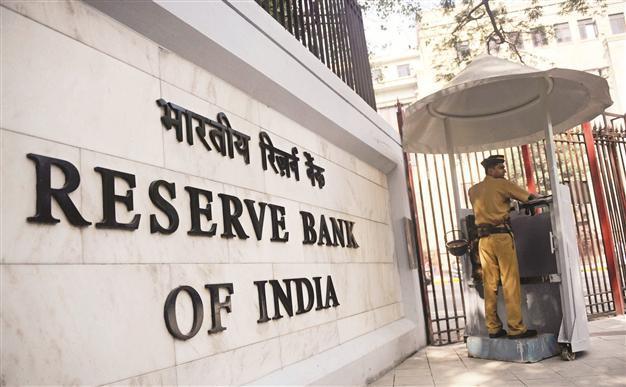India’s rupee crisis deepens as no sign seen for remedy, investors’ exit
NEW DELHI - Agence France-Presse

This file photo shows an Indian policeman standing guard outside the head office of the Reserve Bank of India (RBI), located in Mumbai. AFP photo
Indian policymakers are looking increasingly panicky as they battle the
worst currency crisis in more than two decades, and more worryingly
there is no sign their remedies are working.
The rupee lurched to a new lifetime low of 62.03 to the dollar on Aug. 16 while the benchmark share index posted its biggest one-day fall since September 2011.
“None of the policymakers’ Band-Aid measures (from capital controls to tightening liquidity) seems to be working. They have not been able to turn the tide,” Rajeev Malik, economist at investment house CLSA, told AFP.
“The government and the Reserve Bank of India are taking fire-fighting measures.” The rupee has lost 57 percent of its value against the US currency since it peaked at 39.40 rupees to the dollar in February 2008.
Rupee strength begins in 2012The currency’s strength began unraveling when Lehman Brothers collapsed later that year, triggering the global financial crisis.
But pressure on the rupee has mounted in the past two years as investor alarm over a slowing economy and a ballooning current account deficit - the widest measure of trade - has grown.
Part of the reason for the currency’s most recent slide - it has fallen 13 percent this year against the greenback - lies outside Indian policymakers’ remit.
The currencies of emerging markets globally have fallen on expectations that an increasingly buoyant United States will soon roll back stimulus responsible for funneling big investments overseas in quest of high yields.
But other reasons for the rupee’s drop are home-made - failure to move fast enough on economic reform, a series of government corruption scandals, perceptions of policy paralysis and the record current account deficit, analysts sSince June 1, overseas funds have pulled out $11.58 billion from India’s stock and debt markets. Investors worry that despite the long-term growth potential of the country of 1.2 billion people, “things are not in shape in the interim period”, said investment house IDBI research head Sonam Udasi.
As the rupee’s woes have deepened, authorities have responded with a clutch of measures to try to stem its decline and avert a balance-of-payments crisis.
India has painful memories of its 1991 balance of payments crisis when it failed to attract enough foreign currency and was forced to fly 47 tons of gold as collateral for an International Monetary Fund loan in what was seen as a national humiliation.
No return to 1991 crisisIndian Prime Minister Manmohan Singh, who was finance minister at the time, was moved Saturday to rule out a repeat, saying: “There is no question of going back to the 1991 crisis.” In the past few weeks, Indian policymakers have hiked short-term interest rates, announced plans to allow state firms to raise foreign funds abroad and curbed gold imports. They have also threatened to impose higher duties on imported electronic appliances such as fridges, which are made locally. But it is their most recent step - stealthily announced late Wednesday on the eve of a national holiday - that has fanned the deepest consternation.
The central bank sharply tightened controls on the amount of money firms and individuals can send abroad.
